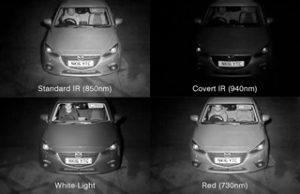
In recent years, the role of video security for vehicle access control has increased. Machine learning and advanced artificial intelligence paved the way for new technologies to take camera-based access control to the next level. The wide range of ANPR solutions calls for guidance in making the right choice of vehicle number plate capturing technology. With over 30 years of experience in Vehicle (and driver) Identification, Nedap is well known in the world of ANPR and shares its expertise below, to help guide security and parking professionals in this important decision making process.
The difference between ANPR cameras and CCTV cameras with an add on function
For reading vehicle number plates, it is important to know the difference between Automatic Number Plate Recognition Cameras vs. Standard CCTV Cameras with an add-on function. A variety of video solutions for long-range vehicle identification are applied within access control applications. But how to decide which solution fits best to your needs?
Comparison of the ANPR and CCTV camera
To decide which camera best suits the needs and requirements of the application and users, several aspects are important to keep in mind. Below are some of the main differences between an ANPR camera and a standard CCTV with server-based ANPR.
Technology
In terms of technology, the ANPR camera has only one task, which is capturing a number plate. The hardware and software design is fully developed to perform this single task.
On the other hand, a standard CCTV camera default detects and records movements near objects and on infrastructure, but can also record video images of vehicles in real time to read license plates. License plate capturing is done centrally at the server level or in the cloud.
Cost
Even though the one-off costs are usually higher with a dedicated ANPR camera, the cost of ownership are regularly lower because there are no recurring software license fees and there is no need to set up a software server.
With the CCTV camera the opposite is often true, although the cost per camera per entry is lower, the total cost of ownership can end up being higher due to the need for servers and ongoing software licensing costs.
Accuracy
ANPR cameras are specialised in capturing number plates in different traffic situations at night, with reflection, high speed and fog. The accuracy of the camera could be 95% or even higher. CCTV cameras, however, are not specifically designed for ANPR, leading to lower accuracy in conditions such as bad weather, direct sunlight, poor IR reflection or high speed of cars.
Connectivity
An all-in-one license plate camera, with integrated ANPR software, reduces the need to rely on a constant server connection and therefore increases reliability. For the standard CCTV camera, it only records images and needs a connection to a server for processing. The quality of the performance depends on the available bandwidth and the quality of the connection.
Processing capacity
Of course with a specialist ANPR camera, processing of the video takes place locally, only light alphanumeric data needs to be sent to a central location. This reduces the network footprint and improves accuracy. ANPR cameras are also available that perform white listing and black listing locally.
In terms of the CCTV only option, due to the constant flow of images, more data must be processed. This means longer processing time, and potentially lower accuracy.
At Nedap, the philosophy is that the quality of specialised ANPR cameras is the top choice for secured applications because of its accuracy, cost efficiency and the connectivity.
The advantages of an ANPR choice mean that the application and users benefit from specially designed cameras optimised to recognise the number plate and give an immediate good reading.
It will also offer a facility for automatic reading and compilation of a list of vehicle registration numbers in an alphanumeric data format. This type of system is also able to offer high reliability by being able to function as a standalone solution and thus reducing the need to rely on server connection. Additionally there is no software server setup and no annual license costs involved, and finally, the processing is speedy because it is sent using digital data instead of having a constant video stream.











